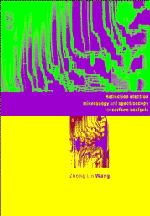Book contents
- Frontmatter
- Contents
- Preface
- Symbols and definitions
- 0 Introduction
- 1 Kinematical electron diffraction
- Part A Diffraction of reflected electrons
- Part B Imaging of reflected electrons
- Part C Inelastic scattering and spectrometry of reflected electrons
- Appendix A Physical constants, electron wavelengths and wave numbers
- Appendix B The crystal inner potential and electron scattering factor
- Appendix C.1 Crystallographic structure systems
- Appendix C.2 A FORTRAN program for calculating crystallographic data
- Appendix D Electron diffraction patterns of several types of crystal structures
- Appendix E.1 A FORTRAN program for single-loss spectra of a thin crystal slab in TEM
- Appendix E.2 A FORTRAN program for single-loss REELS spectra in RHEED
- Appendix E.3 A FORTRAN program for single-loss spectra of parallel-to-surface incident beams
- Appendix E.4 A FORTRAN program for single-loss spectra of interface excitation in TEM
- Appendix F A bibliography of REM, SREM and REELS
- References
- Materials index
- Subject index
1 - Kinematical electron diffraction
Published online by Cambridge University Press: 18 January 2010
- Frontmatter
- Contents
- Preface
- Symbols and definitions
- 0 Introduction
- 1 Kinematical electron diffraction
- Part A Diffraction of reflected electrons
- Part B Imaging of reflected electrons
- Part C Inelastic scattering and spectrometry of reflected electrons
- Appendix A Physical constants, electron wavelengths and wave numbers
- Appendix B The crystal inner potential and electron scattering factor
- Appendix C.1 Crystallographic structure systems
- Appendix C.2 A FORTRAN program for calculating crystallographic data
- Appendix D Electron diffraction patterns of several types of crystal structures
- Appendix E.1 A FORTRAN program for single-loss spectra of a thin crystal slab in TEM
- Appendix E.2 A FORTRAN program for single-loss REELS spectra in RHEED
- Appendix E.3 A FORTRAN program for single-loss spectra of parallel-to-surface incident beams
- Appendix E.4 A FORTRAN program for single-loss spectra of interface excitation in TEM
- Appendix F A bibliography of REM, SREM and REELS
- References
- Materials index
- Subject index
Summary
In a conventional TEM, electrons are emitted from an electron gun and focused by the condenser lens as a beam, which illuminates the specimen. The electron beam interacts with the specimen and is scattered (or diffracted) by the crystal atoms. Thus, the electron wave at the exit face of the specimen contains information about the potential distribution in the specimen. Since electrons are charged particles, their interaction with a solid is rather strong in comparison with either X-rays or neutrons, so that multiple scattering effects are always present in electron diffraction. This means that electron diffraction must be described by dynamical scattering theory, especially when quantitative structural analysis is necessary. However, many characteristics of electron diffraction can be qualitatively treated based on the kinematical scattering theory, which is actually a single-scattering theory. The purpose of this chapter is to outline some basic concepts of kinematical electron diffraction theory and to introduce the imaging theory of TEM, which will be applied in the future chapters for REM imaging. A systematic kinematical treatment of electron diffraction for perfect and imperfect crystals has been given by Cowley (1981). A complete description of dynamical electron diffraction theories has been given by Wang (1995).
Electron wavelength
Although TEM was invented based on the optical behavior of charged particles, the diffraction of electrons is purely a result of the wave property of particles.
Information
- Type
- Chapter
- Information
- Publisher: Cambridge University PressPrint publication year: 1996
